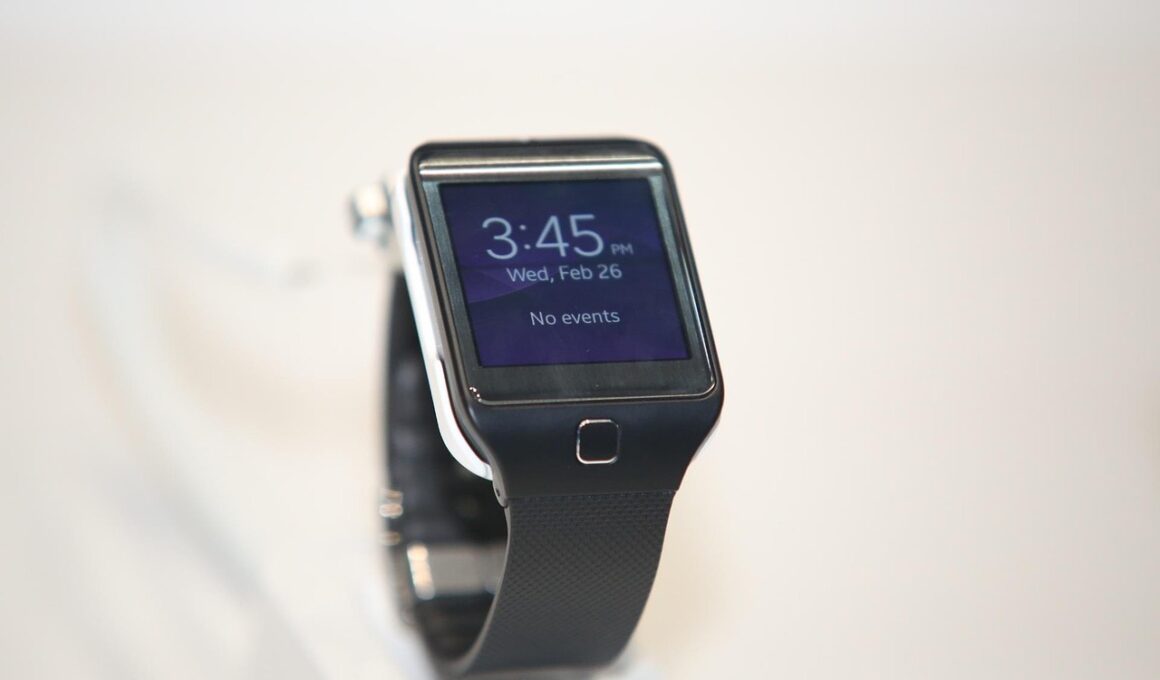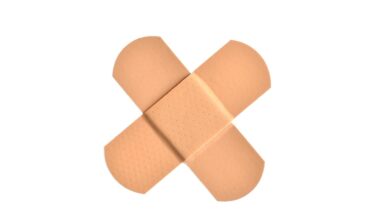Tracking Your Progress: Wearable Devices Every Woman Should Know
As women increasingly engage in fitness activities, wearable devices have become essential tools for tracking progress. These devices provide comprehensive information that can motivate and guide you toward fitness goals. Advances in technology now allow these devices to monitor heart rate, track steps, count calories burned, and even measure sleep patterns. Women have unique fitness needs due to factors like hormonal changes, which can affect workout efficiency. Thus, having targeted data is beneficial for personalized fitness regimens. Popular wearable devices vary significantly regarding features and price. Many are user-friendly, promoting accessibility for all fitness levels. By analyzing data collected over time, women can gain insights into their overall health. Such insights assist in making informed decisions about diet and exercise routines. Setting achievable goals becomes more manageable when supported by accurate tracking. Whether you are a seasoned athlete or just starting your fitness journey, selecting the right wearable device can enhance overall performance. With numerous options available, finding one that fits your lifestyle and preferences is essential. Explore product reviews and comparisons to identify the best fit for your individual fitness journey.
Types of Wearable Fitness Devices
Wearable fitness devices come in various forms, each offering distinct features that cater to different fitness needs. Smartwatches have gained popularity due to their multifunctionality, serving as both fitness trackers and daily life companions. Health and fitness tracking bands are more straightforward but highly effective for women focused on their daily activity levels. These bands often feature step counters and calorie burn estimators, making them ideal for casual users. Some wearable devices focus specifically on heart rate monitoring, essential for understanding cardiac health during workouts. Additionally, specialized devices for tracking sleep quality have become vital for women aiming for holistic wellness. Sleep is a crucial aspect of fitness, affecting recovery and performance. Furthermore, some garments equipped with smart technology, like smart sports bras, can monitor physiological signals more intimately. This innovation can lead to improved workout efficiency. Finally, fitness apps integrated with wearables enhance the user experience, providing additional insights, community support, and goal setting. Selecting a device involves considering personal fitness goals, preferred tracking features, and budget constraints, ensuring it complements your lifestyle and motivates you.
Understanding the data provided by your wearable device is crucial for effective use. Most devices sync with mobile apps, where comprehensive data is presented clearly and accessibly. For improved motivation, many applications include community features, encouraging group challenges and daily check-ins. A primary feature of these apps is goal setting, which allows users to define and track milestones. Goals can be weight loss, distance covered, or workout duration. Achievement notifications and data summaries help maintain motivation throughout your fitness journey. Saturated data can be overwhelming, so starting simple is advisable. Focus on essential metrics like daily step count and heart rate. Over time, you can delve deeper into interpretive data for a better understanding of your progress. Understanding your metrics helps identify areas for improvement and make necessary adjustments. Many apps include educational resources, providing guidance on interpreting data effectively. Personalized feedback is often a feature of higher-end devices, offering insights based on accumulated data patterns. Engaging with these resources can enhance motivation and provide a more profound connection to your fitness journey. Wellness is not just about physical stats; understanding your own body’s responses builds lasting habits.
Integrating Wearable Devices Into Your Routine
Incorporating wearable devices into your daily routine is essential for maximizing their benefits. Start by setting aside time to familiarize yourself with the device, understanding its features and settings. Customizing notifications can help significantly, allowing alerts for step goals or reminders to move. Design a daily routine that includes fitness activities, such as walks, workouts, or even stretching sessions. Making fitness part of your daily life ensures you engage consistently with your device. Scheduling regular workout sessions and suggesting daily or weekly goals can enhance accountability. Utilizing the device during various activities will provide comprehensive data and insights for improvement. Consider tracking non-exercise days as well; understanding how active you are regularly contributes to overall health awareness. Moreover, consistency in using the device can build lasting habits over time. Pairing its functionalities with a fitness app helps visualize progress, allowing adjustments based on performance. Stay flexible with your goals and adapt based on real-time feedback. Creating a supportive community, whether online or in-person, further motivates and encourages engagement with your device. Building a supportive ecosystem effectively maximizes the impact on achieving fitness goals.
Choosing the right wearable device requires careful consideration of personal preferences and needs. Research various options to ensure you select one tailored specifically for women. Popular brands often offer devices designed uniquely for women’s health, with additional features that monitor specific metrics such as cycle tracking and heart health. Cross-referencing product specifications with your fitness goals ensures that the device you select supports your unique fitness journey. Consider female-centric features when making a decision; these innovations can provide more meaningful data for your health. Reviews and expert opinions are invaluable resources to gauge performance and reliability. Pricing is another critical factor; wearables can vary widely, so set a budget upfront. Prioritizing features that matter most will help you make focused choices that meet your requirements without overspending. Think about future tech developments as well; choosing devices with regular software updates significantly enhances longevity. Maintaining a balance between technology and design is essential while ensuring comfort during workouts. Additionally, aesthetics may play a role; many brands now offer stylish designs that are equally functional, allowing wearers to express themselves. Wearable devices should feel like a second skin rather than intrusive tech.
Benefits of Wearable Devices for Women
Utilizing wearable devices provides numerous advantages specifically for women engaged in fitness. These devices empower users by enabling them to set, track, and ultimately achieve fitness goals. With real-time feedback, users can adjust their workouts on the fly, optimizing workout effectiveness. Additionally, tracking progress through advanced metrics fosters awareness of health patterns unique to women, such as menstrual cycles and their impact on performance. Equipped with data, women can make informed adjustments to training regimens based on physiological changes. The support offered by a connected community enhances motivation substantially; interacting with friends or fitness groups encourages accountability. Data-driven achievements celebrate milestones, reinforcing positive behavior patterns. Enhancing safety is an often-overlooked benefit; many devices now include features like emergency alerts, empowering peace of mind during solo workouts. Gynecologists and fitness experts often recommend tracking devices to monitor general wellness, which is essential for physical health. Beyond fitness tracking, wearables encourage mindful practices, helping women recognize the importance of rest and recovery. This holistic approach promotes overall well-being, emphasizing that fitness is a journey rather than a destination. Adopting wearable devices can lead to fundamental lifestyle changes through increased engagement.
In conclusion, wearable fitness devices have revolutionized how women approach their health and fitness. These tools cater to diverse needs by providing accurate tracking, encouragement, and a community of support. From monitoring daily activities to advanced metrics, there is a device for every woman’s fitness journey. Given the many options, conducting thorough research ensures you find a device that aligns with your fitness goals and lifestyle. Adapting to the technology and integrating it into daily routines fosters accountability and consistency, both crucial for achieving success. The combination of personalized data analysis and goal-setting capabilities creates a powerful feedback loop, fueling motivation and commitment toward fitness. As technology evolves, future wearable devices are likely to offer even more precise data and tailored experiences for women. With ongoing advancements, users can anticipate to receive more benefits as manufacturers focus on design and function. Ultimately, adopting wearable devices fosters a happier, healthier life, encouraging women to stay active and informed. For those looking to enhance their fitness experience further, exploring additional features, apps, and community support is essential. Invest in yourself, and let technology lead you toward your fitness goals.


